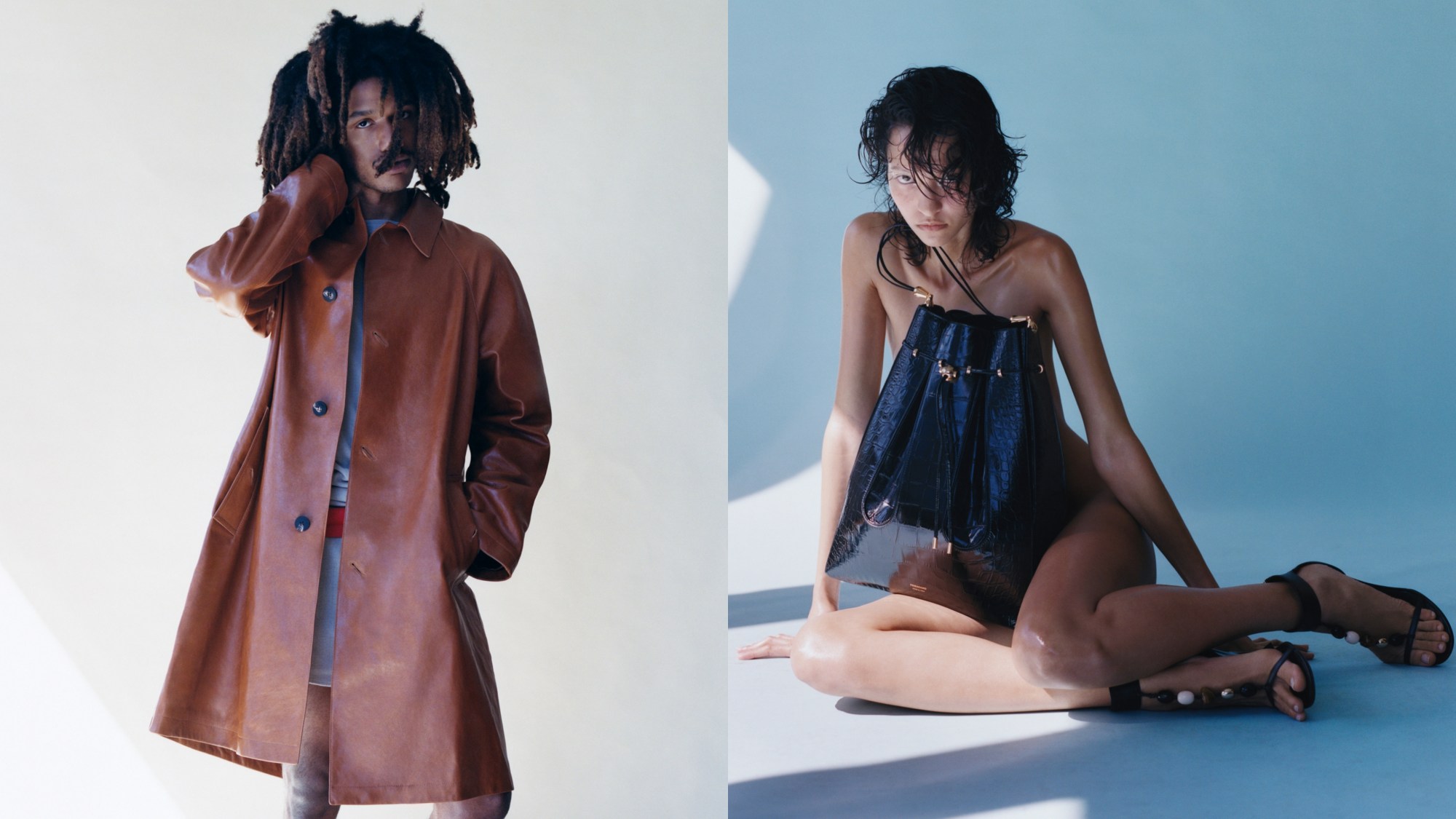This story originally appeared in i-D’s The New Wave Issue, no. 373, Fall/Winter 2023. Order your copy here.
It’s long past midnight in a tiny karaoke room somewhere in Milan and, through a thick haze of smoke, a group is singing Destiny’s Child at the tops of their lungs; another has repurposed a table as a go-go stage to act as their backup dancers. Someone has found some bottles to pour directly into people’s mouths during the breaks between verses; everyone has stripped off layers of looks; Paloma Elsesser, Benji B, Skepta, Zainab Jama, Tyler Mitchell and Pedro Zeek are jostling for the mic. For one night only, Milan Fashion Week appears transformed: instead of the canapés and cocktails that usually celebrate the end of a day of shows, this room is home to that same spirit found on the similarly smoky, similarly low-lit and similarly liberated dancefloors familiar to those who’ve taken the plane over from London.
It’s the same people, the same energy, once found around the DJ booth at Video Visions, beside the stage at Metropolis, or dripping with sweat in the middle of PDA. “It’s London in Milan; it’s a Caribbean boy at an Italian brand,” smiles Maximilian Davis, the 27-year-old creative director of Ferragamo whose debut show, back in September 2022, everyone was in town to celebrate. And it makes sense because, despite his softly-spoken nature and his rigorously refined output in the year since, it was in those spaces that he first found his footing: that, in his words, “I understood what I wanted in life, who I wanted to surround myself with, and what I found inspiring. When I moved to London I was just like: this is the place where I’m going to feel so free. I can just be myself. I cannot care about hiding things from my family, or my parents, and I can just do whatever the fuck I want.”
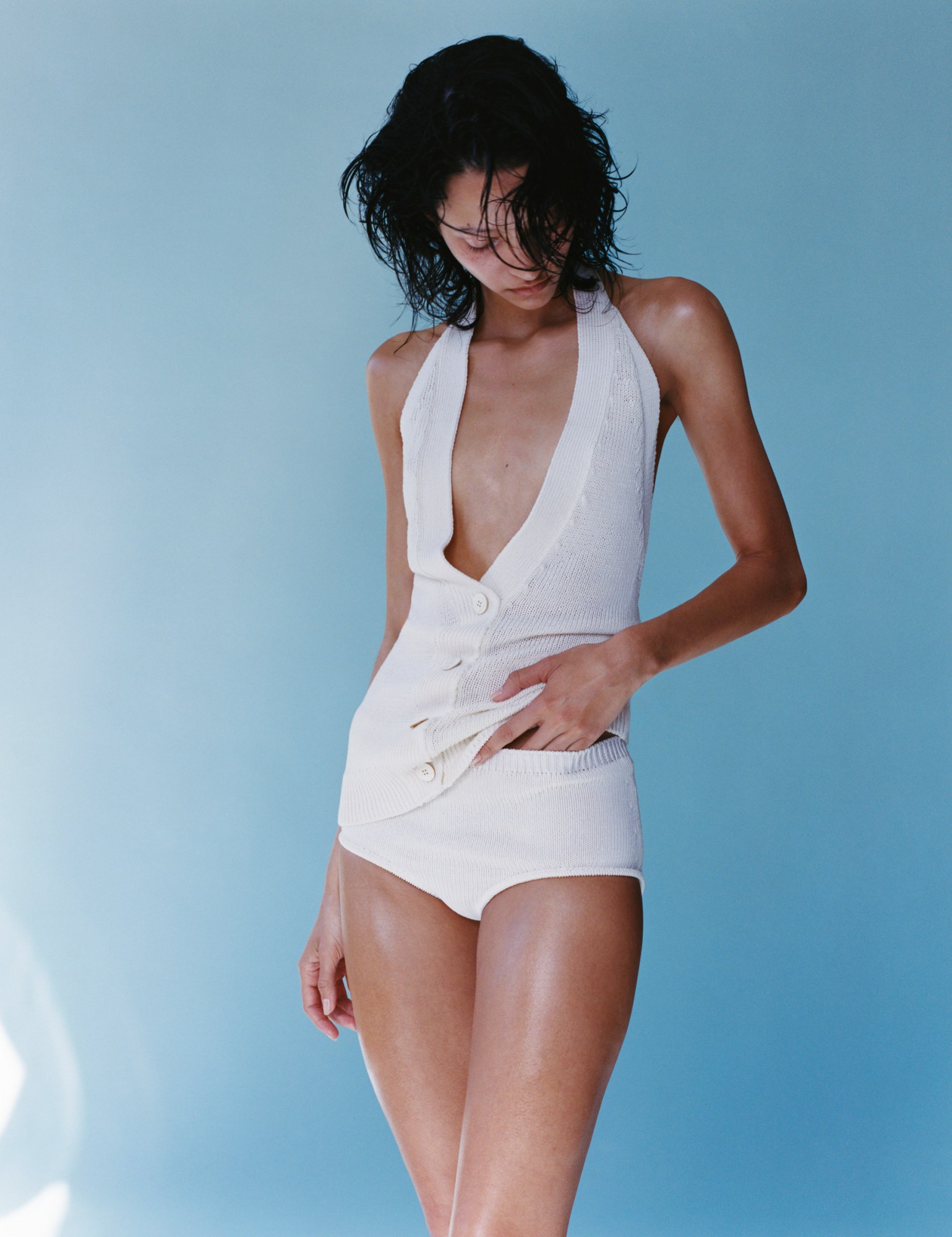
When, in March 2022, Maximilian was announced as the creative director of Ferragamo, the 96-year-old, family-owned Italian brand best known for its Hollywood history of shoes worn by the likes of Audrey Hepburn and Marilyn Monroe (and later as the bow-bedecked footwear of choice for Italian Sciure) social media exploded with glee — and some surprise. Despite the cult following of his eponymous label — albeit one which extended to the likes of Naomi Campbell and Rihanna — he had only been creating clothes under his own name for eighteen months, and had staged a single fashion show, within the incubator framework of Fashion East. In industry terms, he was as green as it got. After moving from Manchester to study at London College of Fashion in 2013, he’d worked on the shop floors at Selfridges and Dover Street Market, so he had a savvy understanding of what women wanted for their wardrobes; and he’d spent time working for Wales Bonner as a researcher and junior designer (he and Grace first met working at Selfridges). But he was still operating solo out of a tiny studio in the middle of an East London industrial estate, having only recently graduated from the sewing table he’d installed in his bedroom. When Naomi or Rihanna requested looks to wear, he’d scramble around looking for a harlequin halter or slip of a dress to send them: there were no rails of clothes, no system of samples, no army of assistants.
Nonetheless, two weeks after that first show, “a stock account with no images and a very blurred display picture” DM-ed him on Instagram trying to get in touch. Assuming it was a bot, he ignored it until, after a few weeks and a series of increasingly desperate phone calls, both the BFC and Fashion East’s Lulu Kennedy convinced him to respond. It was, it turned out, a headhunter agency looking to arrange a call — a call which led to another call, and another, until he was finally sat at lunch in Mayfair with Marco Gobbetti, the newly-installed CEO of Ferragamo.
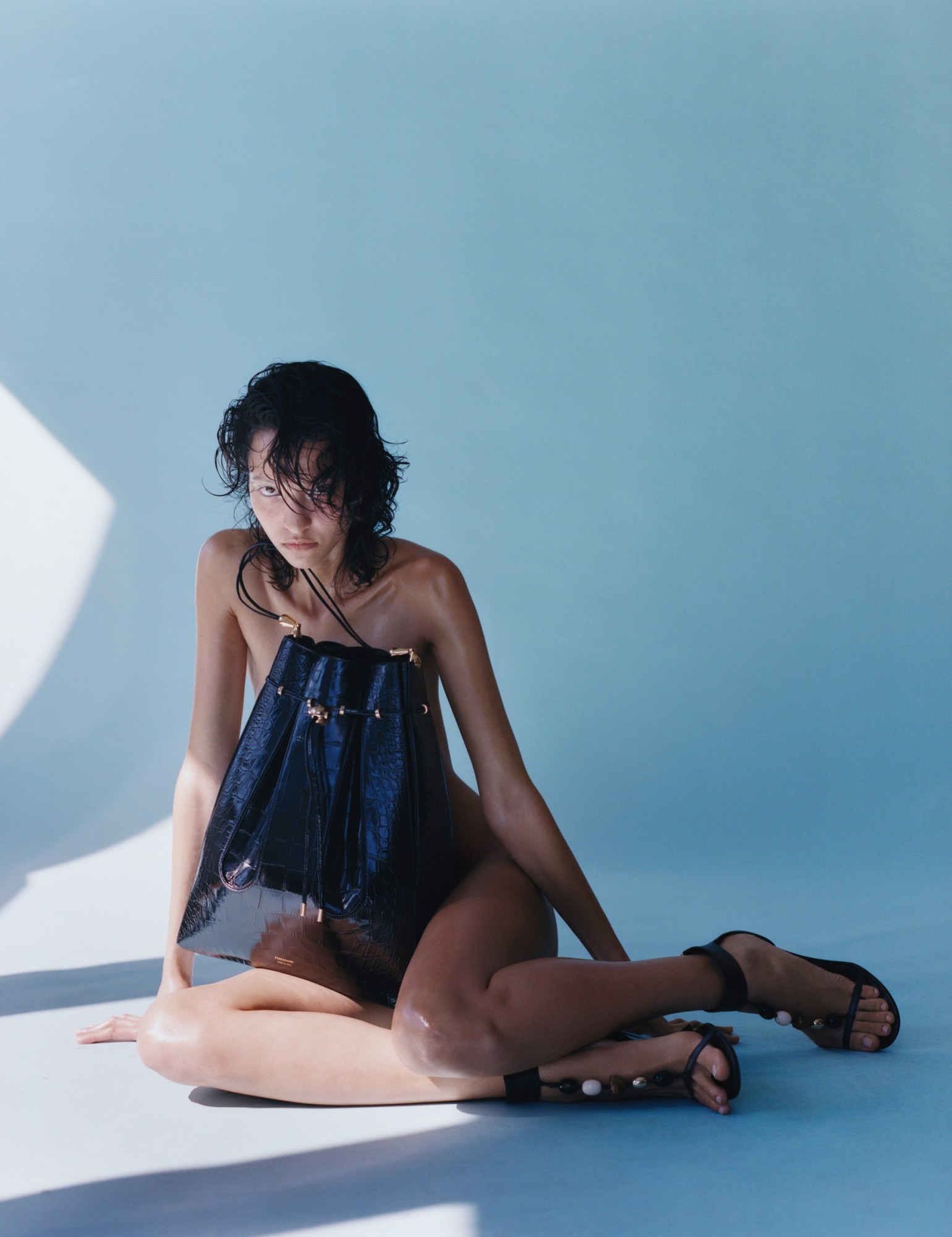
“I was just so fucking scared. I don’t think I’ve ever vomited because I was so nervous and I had to go to M&S and throw up,” he laughs now. But understanding the motivations of Marco, who was previously responsible for appointing a 30-year-old Riccardo Tisci at Givenchy and, later, Phoebe Philo at Céline, calmed his nerves. “That really gave me a lot of confidence and it still gives me confidence to this day. He likes a journey. He calls it a project.”
In advance of their first meeting, Maximilian had diligently assembled a portfolio of research that positioned the codes of Ferragamo parallel to his own designs: the purity of their 80s and 90s runways, the seemingly Caribbean energy of their exotic scarf prints, the branding which adopted the same red found in the Trinidadian flag. “When I was looking at it all, I felt like, ‘Oh, this could be a more elevated version of my work’,” he recalls. “Then I showed it to Marco and he just kept stroking the paper and smiling.” Over the next six months, the two met another eight times before, two days ahead of the announcement in March 2022, he signed a contract. That day he flew to Italy — his first time in business class. “A car came to pick me up and I was like, ‘Oh, this is nice.’” A few hours later, he arrived for the first time in the Osmannoro offices, a complex he can only describe as the size of six big Ikeas. “Then I was just like, ‘Shit. What am I doing? This is actually happening’.”
“There’s a familiarity I have found in the Italian way of dressing and living: an effortlessness which feels very Caribbean.” Maximilian Davis
What is remarkable about Maximilian’s output in the three shows and five collections since, is how directly it evolves his original vision for the brand: that it somehow pinpoints and amplifies the resonance between his own aesthetic proclivities and that of a nearly century-old, family-owned Italian institution. His design instincts are distinctly rooted in his own biography: that of a second-generation son of a Trinidadian mother and Jamaican father who came of age at an all-white Catholic school in Manchester, idolising his two older sisters who’d sneak out of the window to go clubbing in Fornarina micro-miniskirts and slinky Miss Sixty halter tops. It is that tension, between propriety and perversity, between school uniforms and clubwear, that has emerged as one of the defining characteristics of his work: rigour imbued with an irrepressible undercurrent of sensuality, which also speaks to the fact that, as a young, gay Black man navigating a school led by nuns and a home guided by religion, “there was a lot of hiding… a lot of conversations that were being avoided.”
A case in point: for Pre-Spring 2024, he embraced the classic archetype of the Italian family but, amidst the louche luxury of double-faced cashmere and natté wool tailoring, interjected flashes of fetishism: micro-shorts cropped high on the thigh and knee-high patent boots; skin-tight bodycon and the occasional plunging neckline. “I always feel that, in a family, there’s a topic of sex or sensuality that is taboo,” he reflects. “That’s always in my work; it’s something I’ve had around since my upbringing, and it brings this perverse sensuality and modernity to things especially at Ferragamo.”
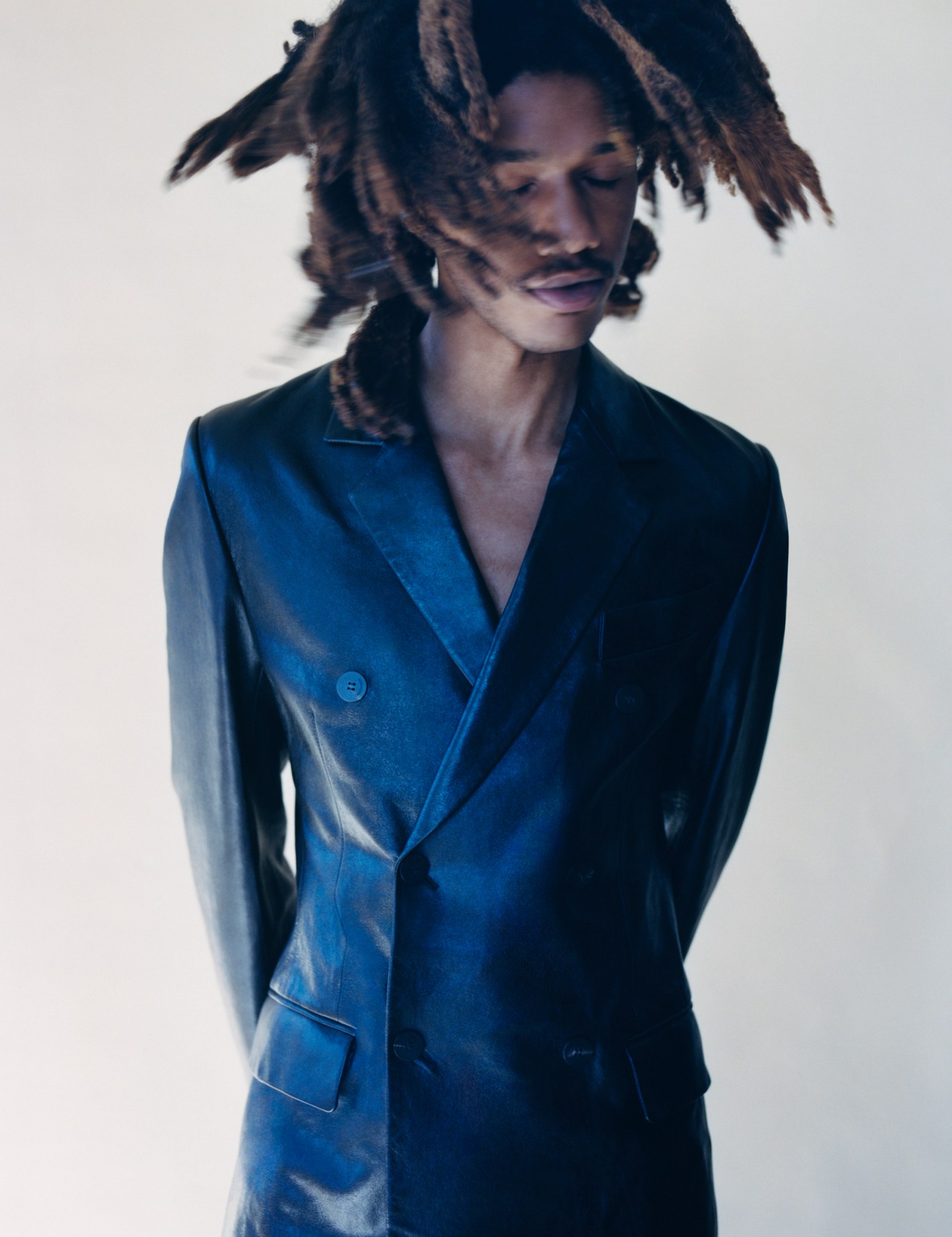
Equally, the polished aesthetic he observed in the wardrobes of his parents, and codifies as Black elegance, has also remained a pillar of his work — but now considered within an Italianate framework. “Black elegance is in the DNA of my design: that way of dressing, the idea of using clothing to portray yourself in the best way possible,” he says. “And I think that being Black at an Italian company brings a sense of contrast or unexpectedness in the way that we put things together — in terms of the silhouette of a fitted jacket with a baggy trouser, or something like that.”
“There’s an expectation of what comes from a young Black designer and I think he’s subverting that,” explains Tyler Mitchell, who has collaborated on two campaigns for Ferragamo. “Blackness has always been associated with streetwear,” continues Maximilian. “Previously, when Blackness was portrayed in a more elevated way, it didn’t get the attention it deserved, or it was overwritten. Now, people have so much more access to information that this moment can’t — or I hope it can’t — be pushed to one side.”

Maximilian’s obsession with tailoring — which was discovered first through his father’s suits and became so pronounced that he spent a teenage summer holiday apprenticing for a family friend, a tailor who later helped him source the materials and pattern cut for his first Maximilian collection — has manifested in a laser-focus on the category at Ferragamo. Since moving to Italy, he has found fascination aplenty in the exacting nature of Italian craftsmanship, and in the everyday elegance of the people he passes en route to work in Florence or Milan, but he has now hybridised that sensibility with Caribbean ease: “a Caribbean British person’s take on Italian-ness,” he calls it.
“I wanted Spring-Summer to be a part of me, to talk about my Caribbean heritage and relate it to Italian-ness,” he says. “There’s a familiarity I have found in the Italian way of dressing and living: an effortlessness which feels very Caribbean.” So, for his latest collection, sharp suiting was slashed into fluidity, while the Florentine drapery of Renaissance sculpture found an affinity with Agostino Brunias’ 18th century depictions of emancipated Caribbean women. The scarf dressing key to the Ferragamo language appeared printed with Venus flytraps, while organic cottons and linens were treated and transformed to appear as leather. On stilettos, natural stones in shades of Italian marble were strung down T-straps; frame handbags appeared fringed with wooden beads. It was a hybridising of the lightness and ease he sought for summer with the tension he seeks the rest of the year: beneath a Hitchcockian cornflower blue day dress, cut in a nipped mid-century silhouette, appeared slick black patent leather boots.

While the precision of Maximilian’s aesthetic is remarkable for its sharp lines, graphic purity and exacting finishes, there is something distinctly London that remains beneath the glossy exterior. It’s found in the disturbing of propriety: the perverse point of a pump; the subversion of second-skin leathers; the fetish-tinged shoes peeping from beneath a trouser suit. “Max is a friend — he’s someone I knew through Grace [Wales Bonner], and through just going out in London,” says Tyler. “And because I know him first as a person, I can really see him as someone who makes clothes for his girlfriends to wear: to dress his friends in London both for a night out, and to look chic in general. He’s a fun guy, and his work really evolves from a lifestyle of going out, of being in a young social scene with other young Black and Brown people — and you can see that peppered into what he’s doing at Ferragamo.”
“To know Max is to know his community of people: his friends are his family and his family are his friends,” explains Zainab Jama, who first met him in London clubs and made her modelling debut on his runway, walking every one since. “It’s a community of support, love and trust — and sometimes, when we are all together, I look around and think how lucky we are to be part of the legacy he is building. Every woman I know and care about can find themselves in his vision, and that in itself is a triumph. He is one of the rare designers who knows and cares to know how women want to feel, look and think: they’re smart, sexy — very sexy — and so very sophisticated. Without bias, I can’t remember the last time the industry had a brand which had all the girls and guys so excited.”
It’s true: turn up to one of his shows and, alongside the coterie of industry heavy-hitters, there are the friends who have gotten the first flight over and are dressed in his designs: Mowalola, whose studio flat he shared for a period and who pushed him to design his first collection; Shygirl and Kelela, who he met on London dancefloors; Mischa Notcutt, who once ran the club night PDA and now directs his casting; Virginie Moreira and Thom Walker, who have been doing hair and make-up for him since the first lookbook. “It’s the same team,” Maximilian smiles. “I had a feeling that, when I got the job, a lot of my friends were thinking: ‘that’s it. Max is going to go and work with other people who are at a different level, who have more experience’. I just said to them: ‘Look, you are part of the reason that I’ve been approached. You all supported me from the very first lookbook that we did, for free, and you all went into your own pockets and helped me do this. I’m not going to forget that.’”
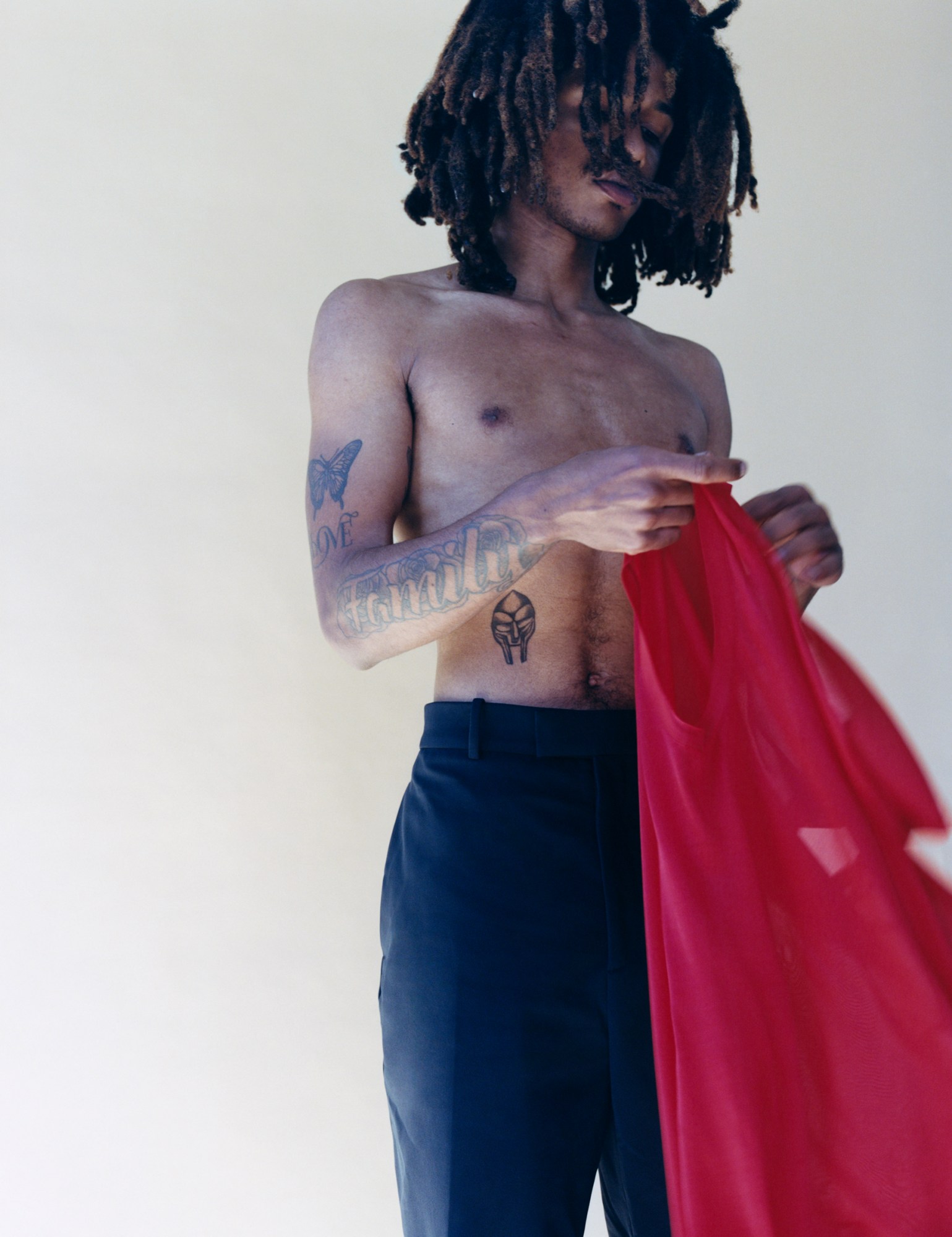
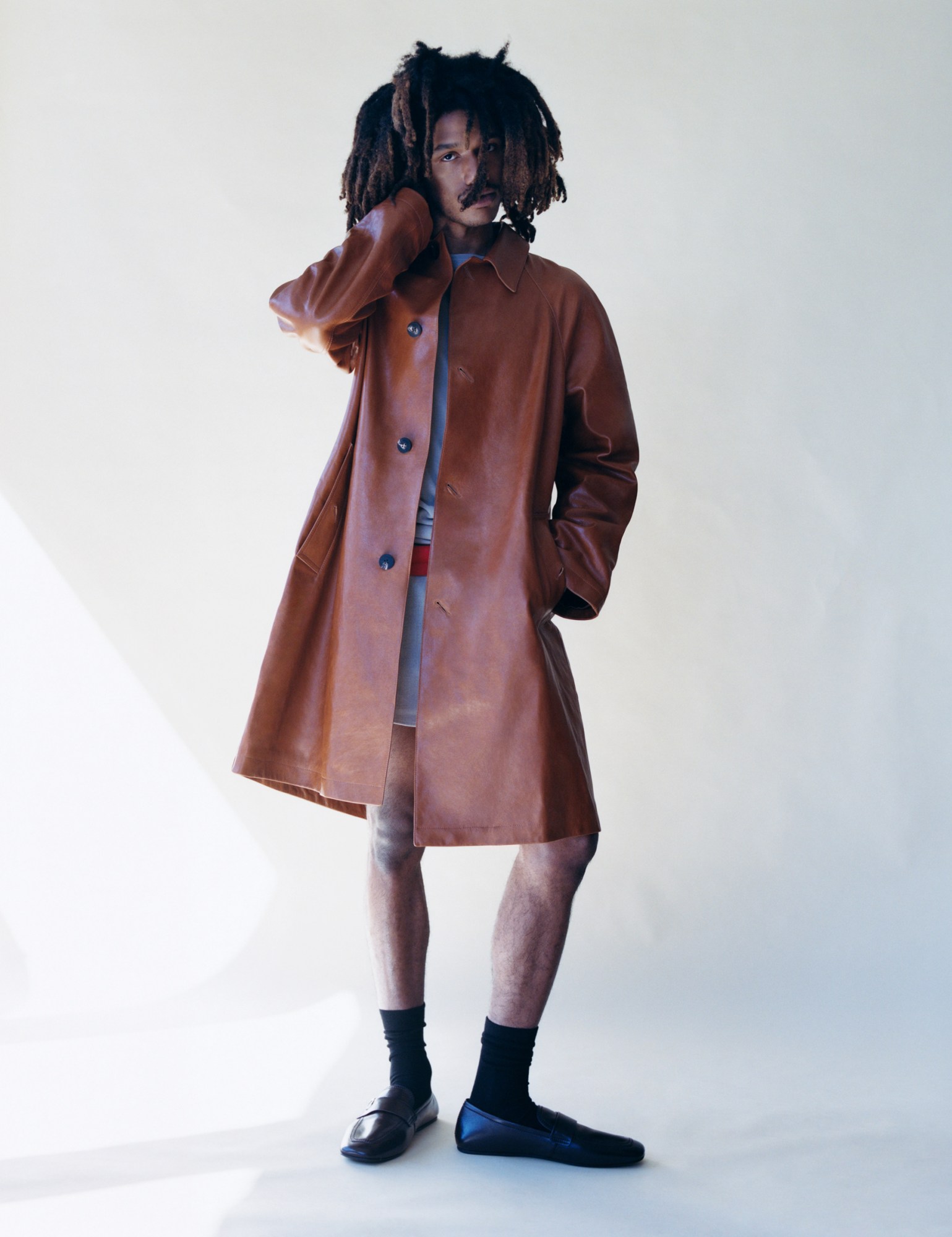
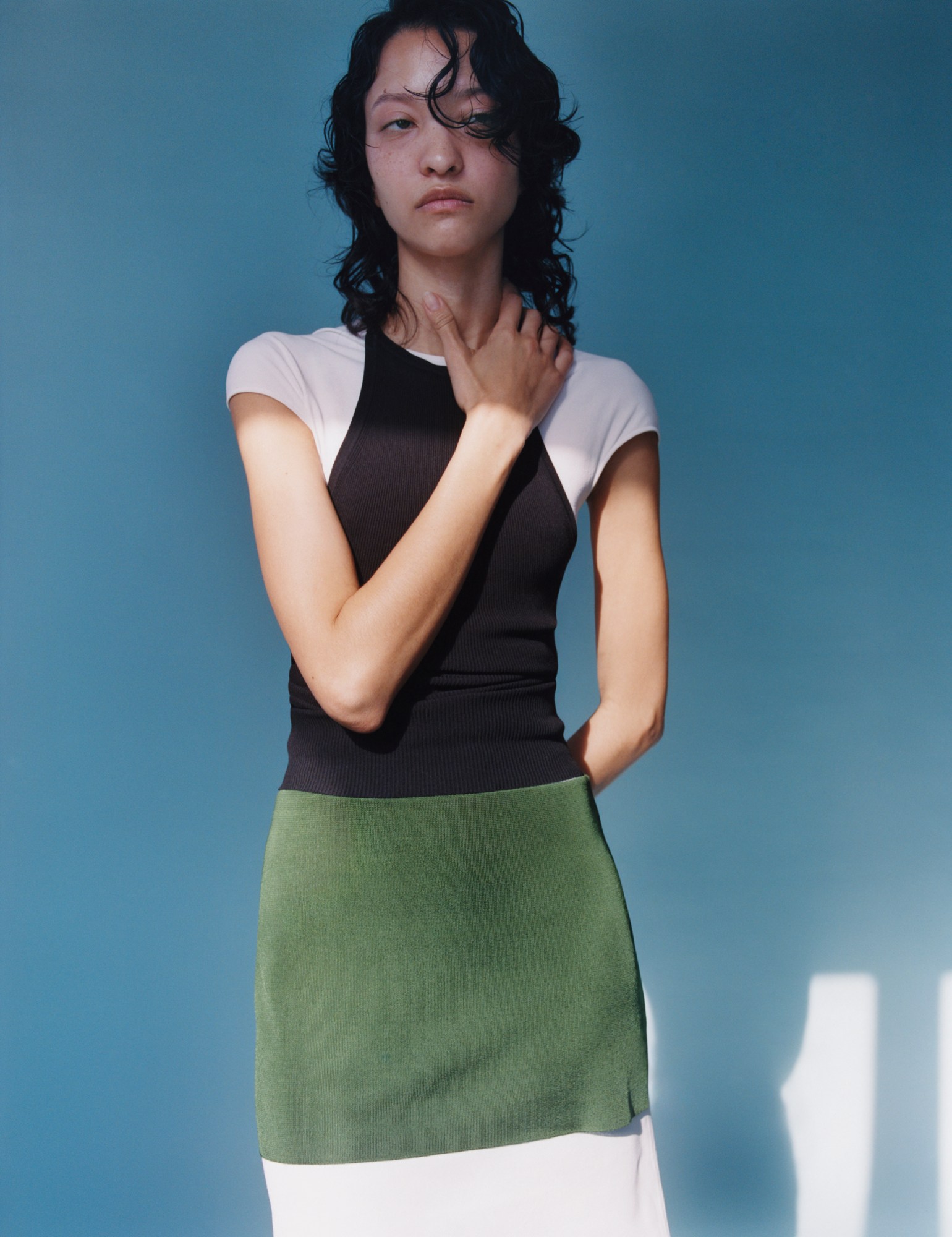
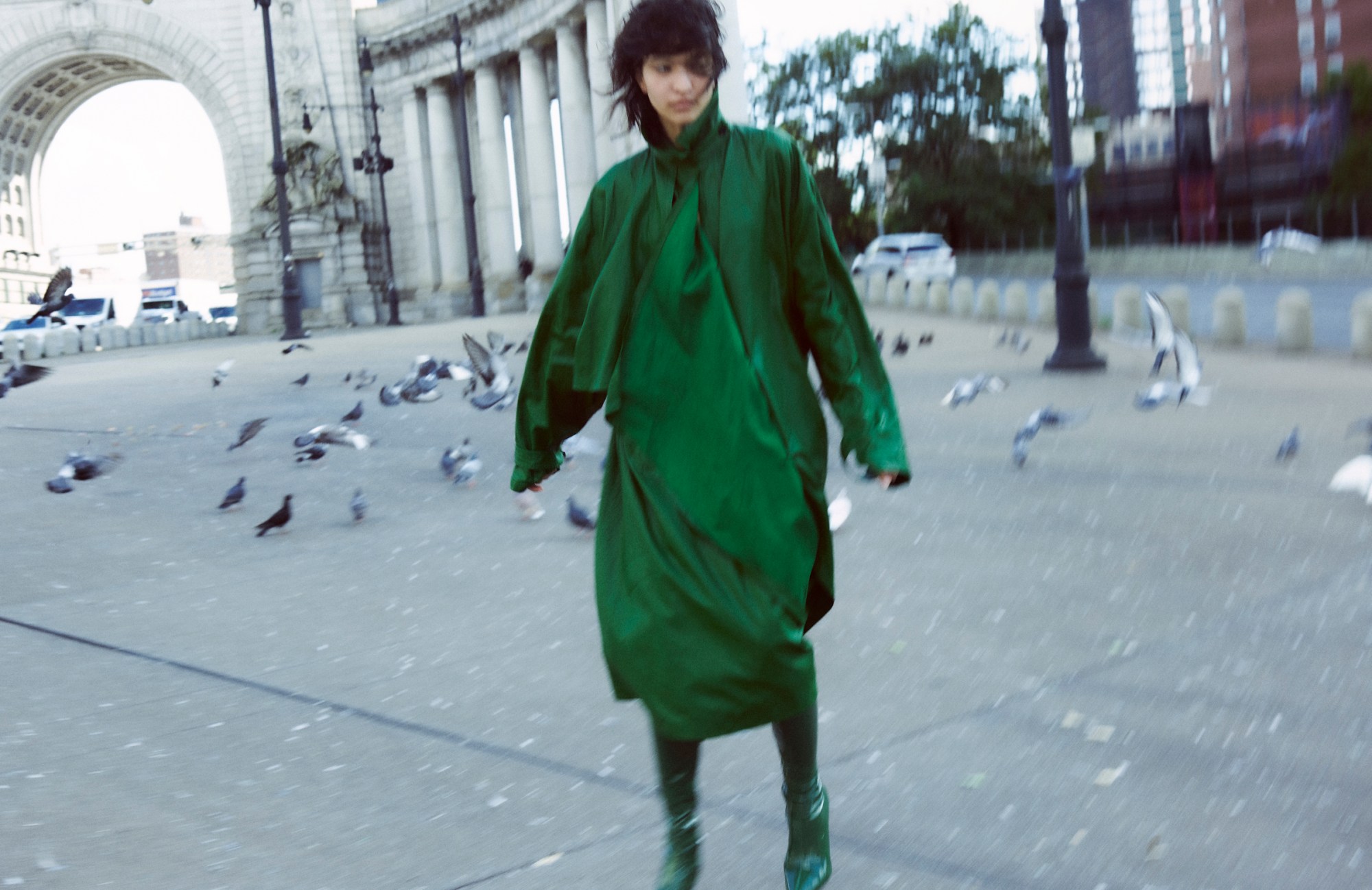
Credits
Photography Oliver Hadlee Pearch
Fashion director Carlos Nazario
Hair Jawara at Art Partner using Dyson and Oribe
Make-up Yadim at Art Partner
Nail Technician Dawn Sterling using NailGlam
Lighting Director Eduardo Silva
Photography Assistance Keegan Keith
Fashion Assistance Terrence Mann and Caden Swift
Hair Assistance Sondrea Demry and Roddi Walters
Production Luca Mazzarini and Juliette Kenn de Balinthazy at Partner Films
Production Assistance Holly Brennan
Casting Director Samuel Ellis Scheinman for DMCASTING
Casting Assistance Brandon Contreras for DMCASTING
Special thanks to Cherry Studios
Models América González at Supreme and Julian Kent at No Smoking
All clothing and accessories FERRAGAMO SS24
